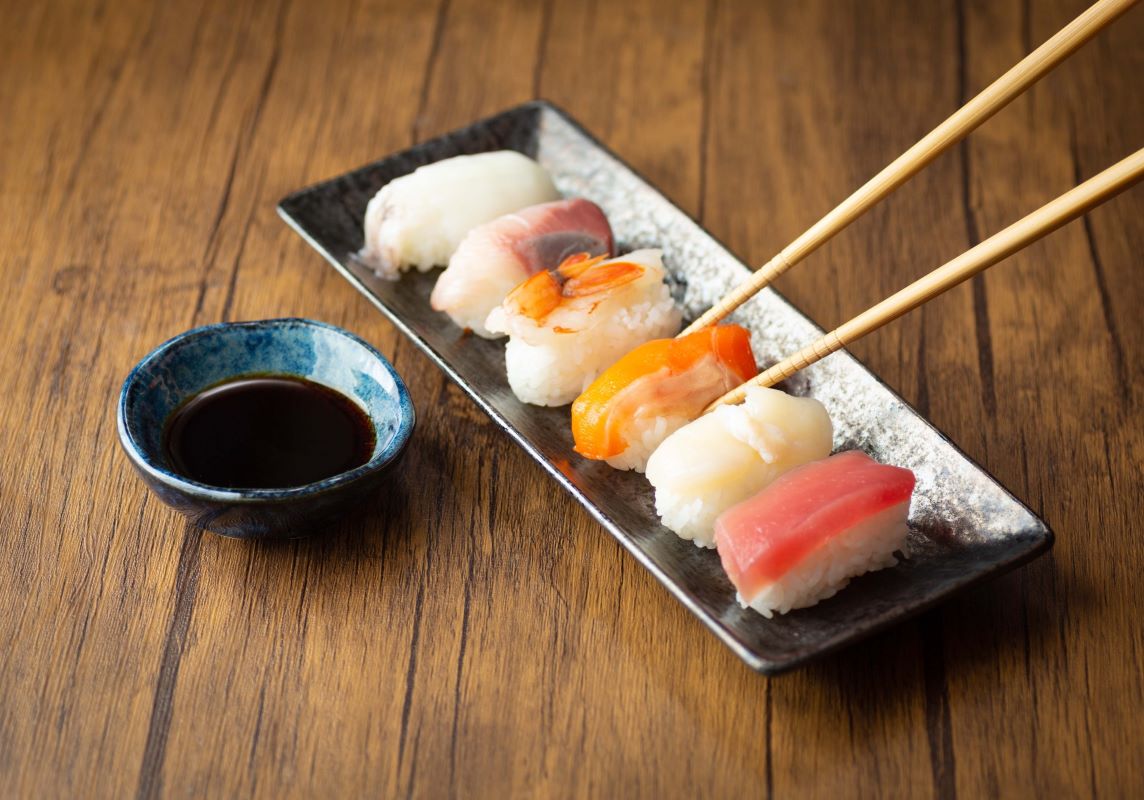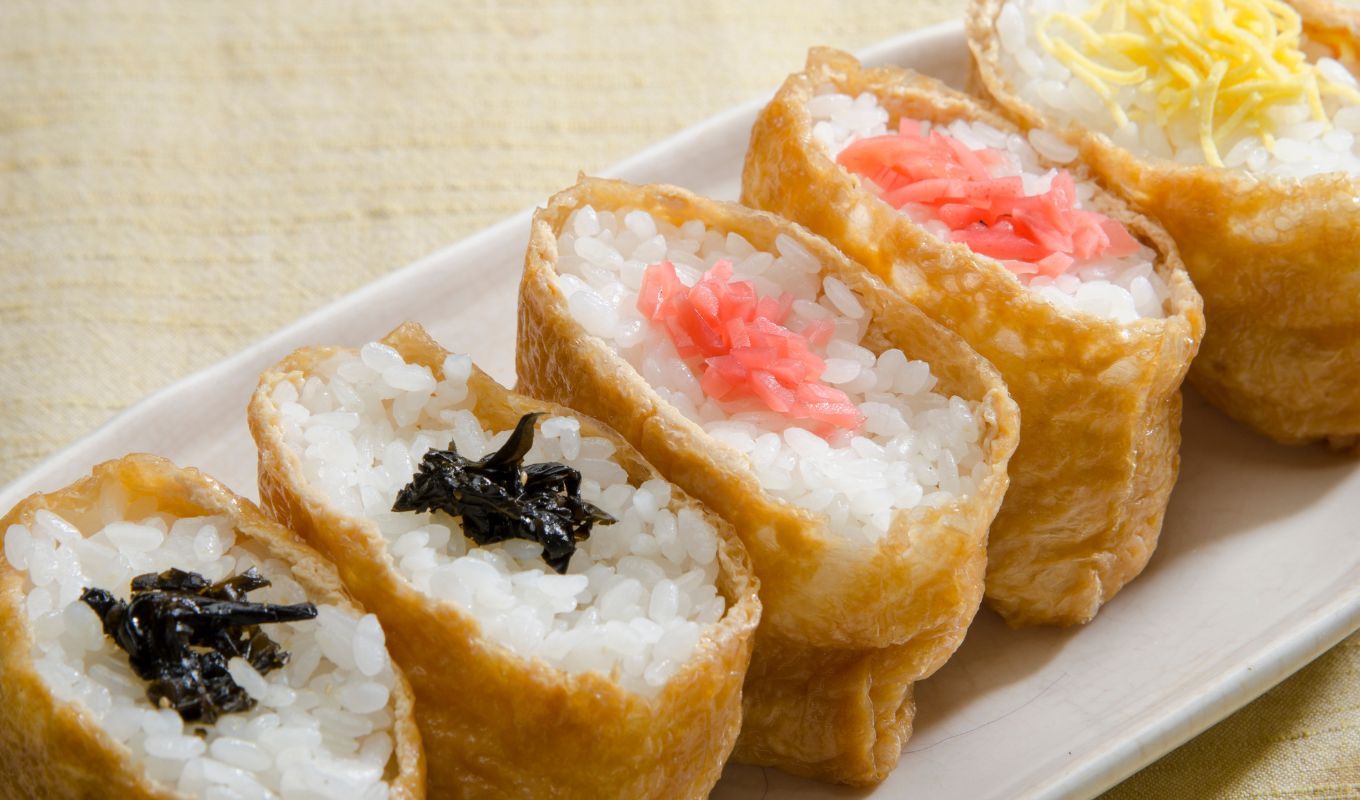Japanese sushi is likely the most popular form of Japanese food found in restaurants around the world. The word “Sushi” itself is also possibly the most popularly known Japanese loan word used in various languages around the planet.
While other close neighboring Asian countries may insist on their own name for the style of cuisine, most of the rest of the world features restaurants happily advertising the word “Sushi” to their international clientele.
The word originally actually refers to the vinegar-enhanced rice used in Sushi, which will become rather evident as we look at various dishes commonly offered at Sushi restaurants.
Interestingly enough, the culinary art of Sushi supposedly started as a way to preserve pieces of fish by placing them in rice that had been enhanced with vinegar and fermentation to prolong the freshness of the fish.
Sashimi

If you are being served or choosing a dish that features only small pieces of raw fish at a Sushi restaurant, this kind of dish is actually referred to as “Sashimi” as it is technically not “Sushi”. It is simply raw fish, with no rice involved. This is one of the common types of dishes you will find at most Sushi restaurants.
Nigirizushi

Adding a nice and small bed of rice on which your Sashimi may rest in a beautifully contoured way is referred to a “Nigirizushi” (pronounced Nee-ghee-ree-zoo-she). This is now a kind of Sushi. It is yet another popular style of dish you will find at Sushi restaurants in Japan and it is also likely the most common style featured.
Inarizushi

Inarizushi is a type of Sushi that involves packing rice and/or other ingredients into a pocket made of fried tofu. The tofu is often flavored and in concert with the rice and other ingredients makes for a delicious combination.
Makizushi

Makizushi is likely what most people outside of Japan would consider the archetypal concept of Sushi. It is the kind of Sushi that is most commonly rolled evenly inside a specially pressed sheet of seaweed, called “Nori” in Japanese, or wrapped around a sheet of Nori. This is the style generally most common in Sushi restaurants outside of Japan, but not necessarily the most common in Japan itself.
Temakizushi

This is another kind of Sushi that also is housed inside of a sheet of seaweed called Nori. The ingredients are wrapped in a conical way inside the Nori so that it basically resembles an ice cream cone, or more accurately a waffle cone of ice cream. In the west, these are commonly called “hand rolls” and are often larger than other types of Sushi.
Chirashizushi

Sushi served as a group of ingredients placed in a small bowl is referred to as Chirashizushi and can be a very colorful way to enjoy your sushi.
One quick recommendation for eating Sushi in Japan is to not mix the wasabi (green horseradish) and soy sauce in the small dish provided for the soy sauce. The person preparing the Sushi may have been very precise about the amount of wasabi already hidden in your Sushi. Ultimately though, the only “rule” of etiquette is to enjoy your meal and express your appreciation if at all possible. Feel free to say “Go-chee-so-sa-ma-desh-ee-ta” (Well done!) as you are on your way out of the restaurant after your meal.